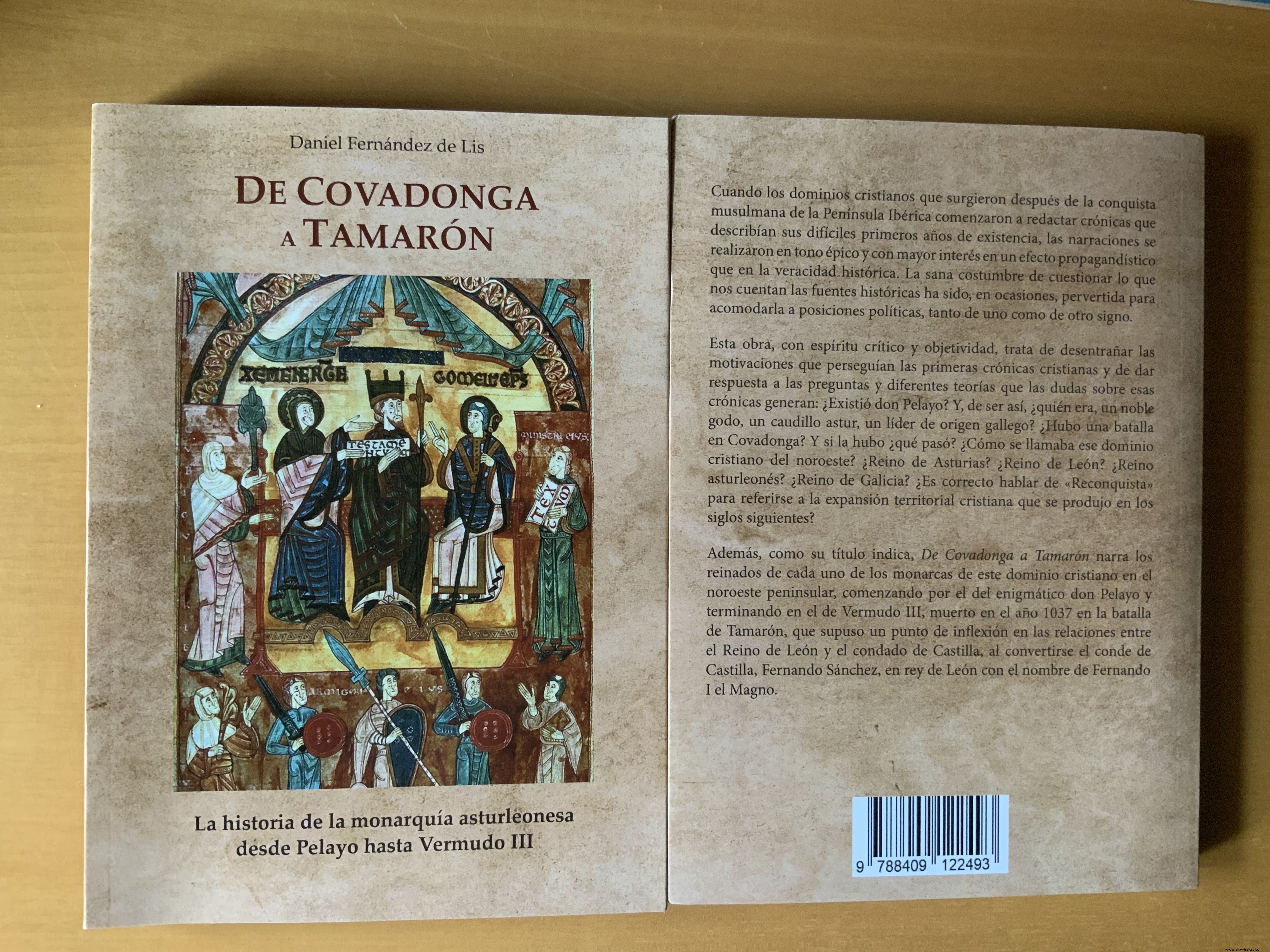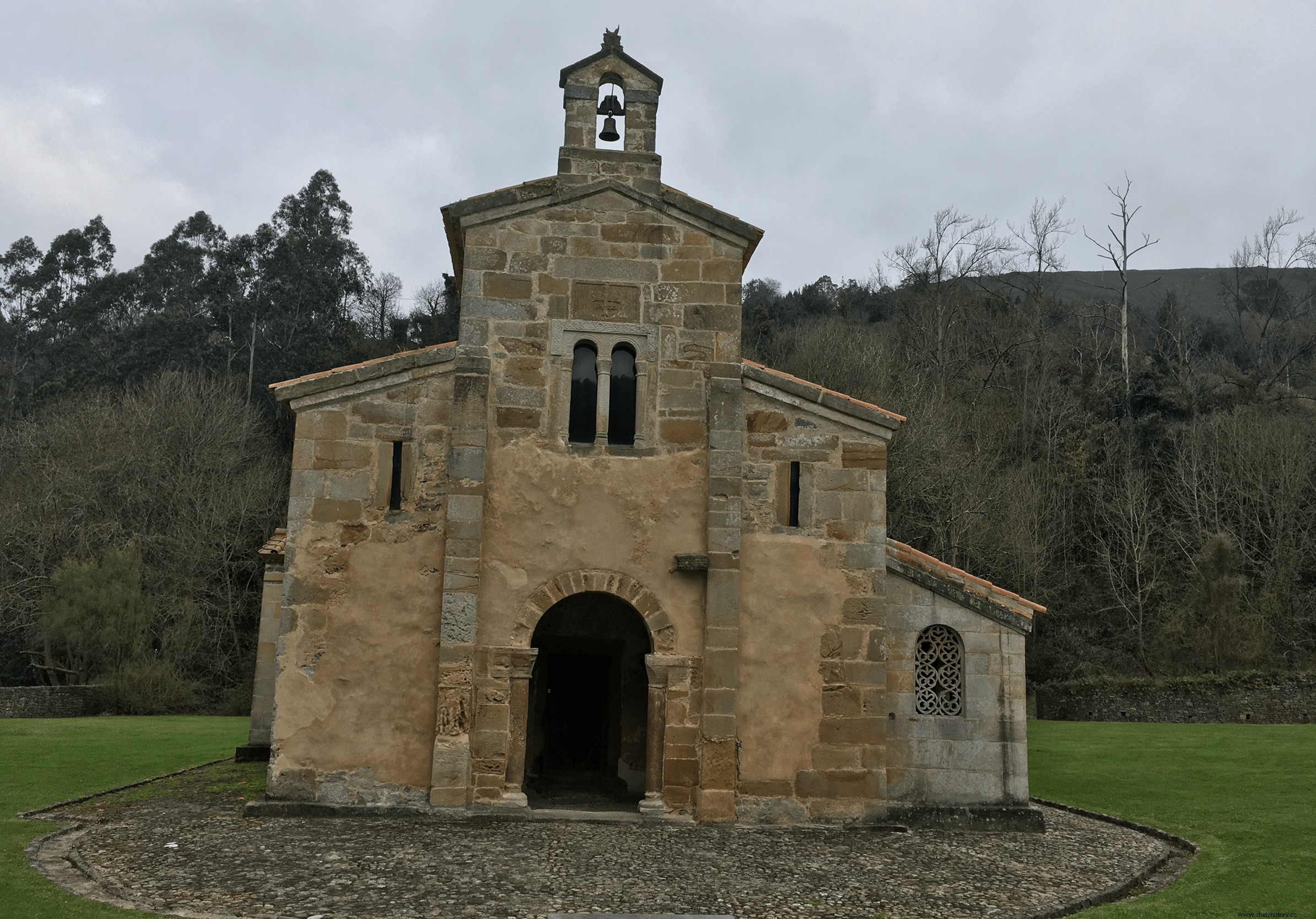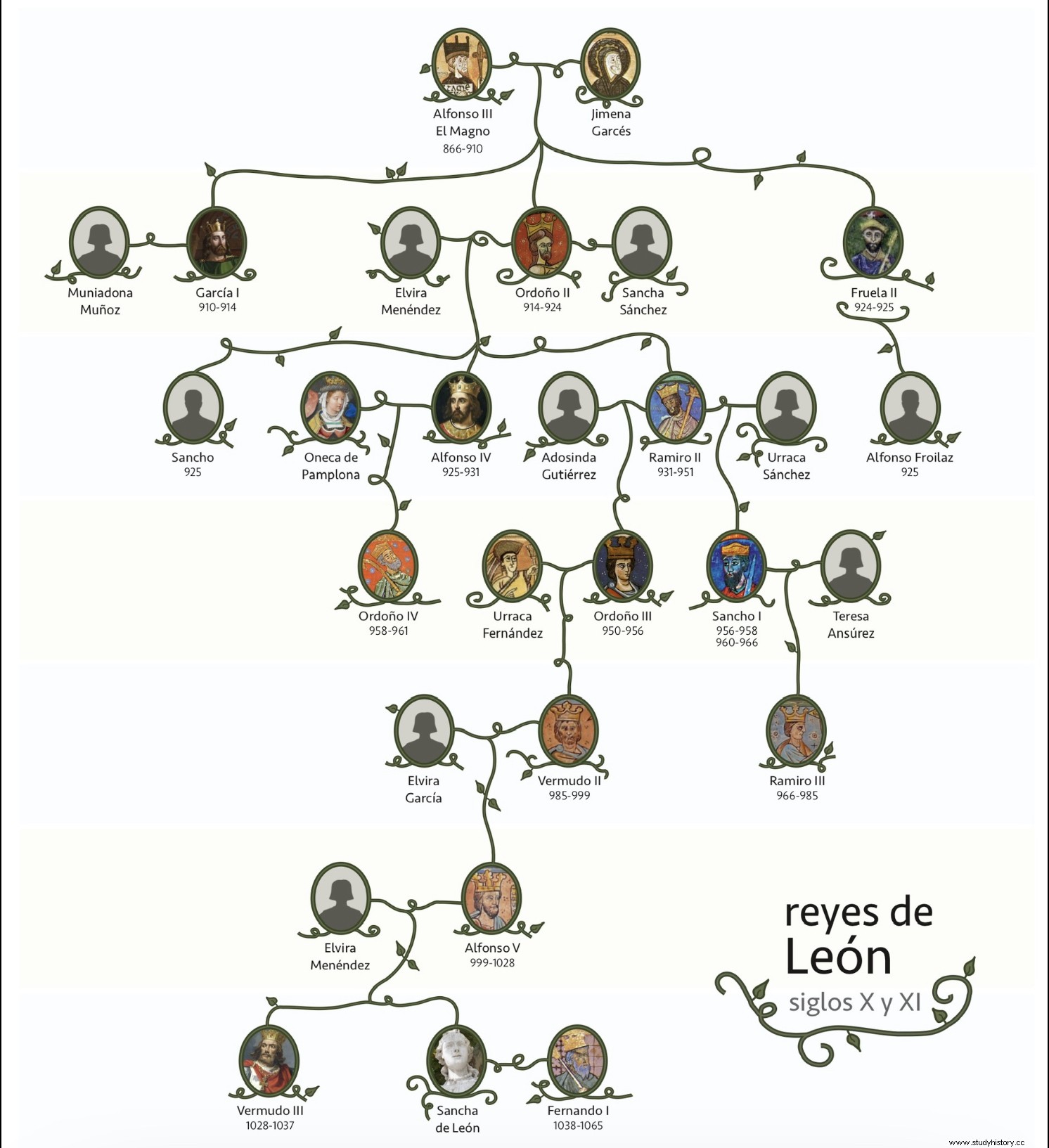Entry taken from the book From Covadonga to Tamarón .

The first entry in the series dedicated to Alfonso III the Great ended, indicating that his last years of reign and his succession were not exactly peaceful.
In the year 907 or 908, on the way back from an expedition to Toledo, Alfonso III encountered a rebellion by his own sons, with the eldest son García at the head . The monarch was taking castles on the way back and executing the rebels, although his son García de el, whom he captured, took him captive to the Asturian fortress of Gauzón. There he was released by his father-in-law Nuño García, Count of Castile.

The events that follow are confusing, but end with the king retired (indeed or by force) to Valdedios (Villaviciosa), and his children exercising power until the death of the monarch on December 20, 910 in Zamora, not before, according to some chronicle that not all authors admit as truthful, the old Alfonso came out of retirement to brandish the sword once more against the Saracens in a successful campaign
With his usual poetic and epic style, Cotarelo tells us that:
[…] now free from the Crown, Don Alfonso reduced to the status of a knight, as such a pilgrim to Compostela, where well-loved arms await him of the Galician king and his collaborator Sisenando; and hearing that the new prince was in Astorga, he went there to demand permission to lead the troops that he had taught to triumph and that were no longer his to victory once more. Simple general of his son, ungrateful to him, he spreads terror in the morisma, loaded with spoils, followed by captives, he returns to dear Zamora, where after a brief illness death visited him.
The Albendense Chronicle summarizes the reign of Alfonso III with a concise phrase:«the Church grows and the kingdom expands». Gracia Noriega elaborates further in her compendium of the mandate of Alfonso III:
[...] in forty-four years of reign he led thirty campaigns against the Moors, reaching as far as Sierra Morena; he populated and fortified various cities in Galicia and Portugal, founded the city of Burgos and married Doña Jimena, daughter of García, king of Navarra, understanding the need for strong links between the Christian kingdoms of Asturias and Navarra. He conquered and repopulated the north of Portugal, taking into account, on the other hand, that this territory "was the escape valve for the autonomous desires of the Galician nobility" (Rodríguez Muñoz and González Muñiz) .
Chao Prieto abounds:
Alfonso takes advantage of the internal problems of the Andalusian emirate and doubles the surface of his kingdom, integrating cities and territories that will have vital importance in the future. It is also the moment when power shifts to the other side of the mountain range, to the space of the Asturian Augustans, where the old and well-fortified military headquarters of Roman Hispania will become the new capital of the kingdom:León.
What happened in the last years of the reign of Alfonso III and after his death is shrouded in mist, since the chronicles ordered or written by this monarch are contemporary to the mandate of the. Everything seems to indicate that his three children already ruled in some way over various parts of the kingdom, but none dared to proclaim himself king while his father lived. This was to change after his death on December 20, 910.

Of the king's three children, his eldest son, García I, was proclaimed successor to his father and soon established his domain in the area of León (including Álava, the Gothic Fields and Castile). His brothers, Ordoño and Fruela, lived in Galicia and Asturias, although the theory according to which since the death of Alfonso III the kingdom was divided between his children is controversial. It does seem clear that, from the beginning, there were dissensions between the brothers, but not so much so that each one reigned, and much less due to a right of succession established by his father over León, Galicia and Asturias respectively. Other theories point to a government, possibly as kings, of Ordoño over Galicia and Fruela over Asturias, but subject to and under the sovereignty of García I.
The truth is that, even due to his marital bonds, the influence of García (married to the daughter of the Castilian count Munio Núñez) was especially strong in Castilla y León, while the de Ordoño (who married Elvira, daughter of the count who repopulated Coimbra and granddaughter of the one who repopulated Astorga) was in Galicia and Portugal.
The dissensions between García and Ordoño that we have mentioned are evident in all the chronicles, Christian and Muslim, which refer that Ordoño came from Galicia, but not that he ruled as a king there.
Transfer of the capital from Oviedo to León and change of name of the kingdom
There are those who fix the year 910, with the death of Alfonso III and the accession to the throne of García I, as the transfer of the capital of the kingdom from Oviedo to León. However, we cannot understand the events of the tenth century with current criteria. There was no formal declaration of transfer of the kingdom's capital. The change of residence of the king was very common at the time, so much so that it is not even mentioned in the chronicles. When these refer to a monarch, they do so by pointing out that he is "by the grace of God" or "by divine consent" and, not always, indicating that he "reigned in Oviedo" or "reigned in León".
And this reference to the place of residence of a monarch should not be taken literally to define the capital of the kingdom. There are documents from the times of Ramiro I, Ordoño I and Alfonso III that conclude with the legend regnante in Legione (León) and others, already well into the 10th century and of kings after Alfonso III who indicate after identifying the monarch:regnante in Ou eto (Oviedo).
Various documents place Alfonso III as resident in León and an Arab chronicle (late, yes, since it dates from the 14th century) indicates that he was the one who changed the capital status to León and that He called himself King of León. As for the reasons for the transfer, Gracia Noriega points out, "Oviedo was already beginning to be far from the border, so moving the court to León was not so much audacity as necessity."
Regarding the name of the kingdom, it is a complex question that would give for another entry and that is extensively discussed in the book that has served as the main basis for this entry.
Fernández de Lis, D. (2019) From Covadonga to Tamarón. The history of the Asturian-Leonese monarchy from Pelayo to Vermudo III.
Cádiz Álvarez, J. C. (2017) Prehistory. ancient Asturias. The kingdom of Asturias. Your consolidation . Nobel Editions.
Fernández Conde, F. J. (2015). Studies on the Asturian monarchy . Gijon. Trea S.L Editions
Fernández Conde, F. J., Gutiérrez González, A., Fernández Mier, M., Suárez Álvarez, M. J., Arias Páramo, L. (2009). Social and political powers in Asturias. 8th-10th centuries . Territory, society and power. Journal of Medieval Studies. Annex No. 2
Ladero Quesada, M. Á. (2014). The medieval formation of Spain . Madrid. Publisher Alliance. 2nd edition.
Manzano Moreno, E. (2015). History of Spain. Medieval times, volume 2. Madrid. Criticism. Editorial Marcial Pons
Gordo Molina, Á. and Melo Carrasco, D. (Coord.) (2017). The Peninsular Middle Ages, approaches and problems. Gijon. Ediciones Trea, S. L
García de Castro Valdés, C. and Ríos González, S. (1997). History of Asturias. Medieval Asturias . Gijon. Editions TREA S. L
Campomanes Calleja, E. (2004). Asturias:from kingdom to principality. Gijon. Editorial Picu Urriellu
Álvarez Palenzuela, V. Á. (Coord). (2017). History of Spain in the Middle Ages . Ariel. 7th impression.
Chao Prieto, R. History of the kings of León. Rimpego editorial
Fernández Catón, J. M.ª. (2007). Monarch ia and society in the kingdom of León, from Alfonso III to Alfonso VII . Lion. Center for Studies and Research San Isidoro
Carvajal Castro, Á. (2017). Under the mask of Regnum:the Asturian monarchy in León (854-1037) . Madrid. Editorial CSIC.
Martínez Díez, G. (2005). The county of Castile (711-1038). History versus legend (I and II) Marcial Pons Editions of History.
Williams, T. (2017). Viking Britain. An Exploration. London. HarpersCollins Publishers
Domínguez González, C. (2015) Anglo-Saxon England. A historical synthesis (ss. v-xi). Madrid. La Ergastula Editions.
Image| Author archive.
Family tree | Juan Pérez Ventura.
